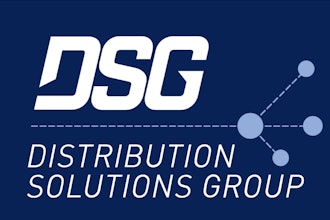
No matter your reason for embarking upon a business rebranding effort of a company or product name, logo, phrase, design scheme or other such asset, which can be mixed and many, one thing is certain: execute poorly and suffer extreme consequences. There is simply no rebranding effort where the stakes are not extraordinarily high and the margin for error is slim at best. This history has been proven repeatedly amid a litany of rebrand debacles that didn’t heed just a few fundamental principles.
With this in mind, globally regarded business growth authority Steve Blue, CEO of Miller Ingenuity — a 60-year old company that successfully implemented a corporate rebranding effort, offers these 7 best practice keys for effectively executing a rebranding initiative:
Key #1: Get clear on what a brand is.
A brand is not just your logo. A brand is the sum total of the messages, interactions, and experiences a customer has with your product, services, and people. To a customer, a brand is the promise of an EXPERIENCE and the customer’s EXPERIENCE of that promise delivered. It’s a valuable asset to nurture over time.
Key #2: Maintain control of the rebranding process.
Use a third party guide because it is easy for a re-naming effort to deteriorate into likes/dislikes or what your spouse thinks. Ground your brand in a strategy that recognizes not only the brand’s origins but also its ultimate destination in the current and future marketplace. Keep an open mind. Small ideas can get bigger and seemingly big ideas can diminish over time. Also identify those equities that cannot change.
Key #3: Understand that a brand has two owners: the marketer owns 50%; the customer owns 100%.
Yes, that’s 150% in total. The marketer produces messages, products and services. Your customer experiences the brand, and in the digital age, they are in ultimate control of their messages they receive. Therefore, check in with customers and, at the very least, include those internal players who have the most customer contact. The worst thing you can do is to decide all branding issues at the top level and dictate it to customers and your troops who must deliver the brand experience. You risk a loss of relevancy and buy-in.
Key #4: Your logo, tagline, typography and design should tell a single-minded story.
Every brand is heroic in some way. Its look, feel, and message should tell one story. Think about what your brand fights for and against what odds. Consider what is at stake for customers in terms of their problems and how you solve those for them. By becoming a hero to your customers, you, in turn, make heroes out of them. That’s truly adding value.
Key #5: Never forget that a brand should always remain fluid.
Some will warn you that changing your brand is a major risk. If it fails, it can be expensive and disruptive. Note Coca Cola’s experience with “New Coke.” However, if you do not violate a brand’s established equities and values, you can still add flexibility into a brand that allows it not to lose relevance. For example, Tide Detergent is built on consumer’s trust that it gets clothes clean—yet the brand has found multiple fresh expressions of that proposition over the years, even adding benefits to fend off competitors. Therefore, create a brand positioning that is broad enough to be as relevant today as yesterday and flexible enough to be relevant in the future.
Key #6: Never stop supporting and promoting your brand
Successful brands are a living presence in the marketplace with a tangible relationship with its customers. It’s easy to support a brand in boom times, but much tougher in down times. However, study after study has shown that brands that are consistently supported during a down cycle, gain greater sales and share when the economy turns up—over those who cut support activities.
Key #7: Be a Brand Champion
Having gone through the discipline of crafting or refreshing your brand, appoint a key leader, typically in Marketing, to be a Brand Champion. Set up brand guidelines and procedures to make sure the identity you have carefully created presents a consistent image and message in marketing communications from business cards to digital media, in sales presentations, in signage, at events and trade shows—wherever the customer will engage with your brand.
In summary, executing a rebrand must be extraordinarily strategic, not violate the company’s cultural roots, be relevant and consistently supported, and place the customer benefit front and center at all times. It’s all about them.
With more than three decades of management, executive, consulting and speaking experience in markets all over the world, Miller Ingenuity CEO Steve Blue (www.StevenLBlue.com)is a globally regarded business growth authority who has transformed companies into industry giants and enthralled audiences with his dynamic keynotes. In his upcoming book, “Outdo, Outsmart… Outlast: A Practical Guide to Managed, Measured and Meaningful Growth,” he reveals why seeking growth and surviving growth are equally perilous, and require different sets of plans to weather the storms. Follow Steve @MillerIngenuity.






















